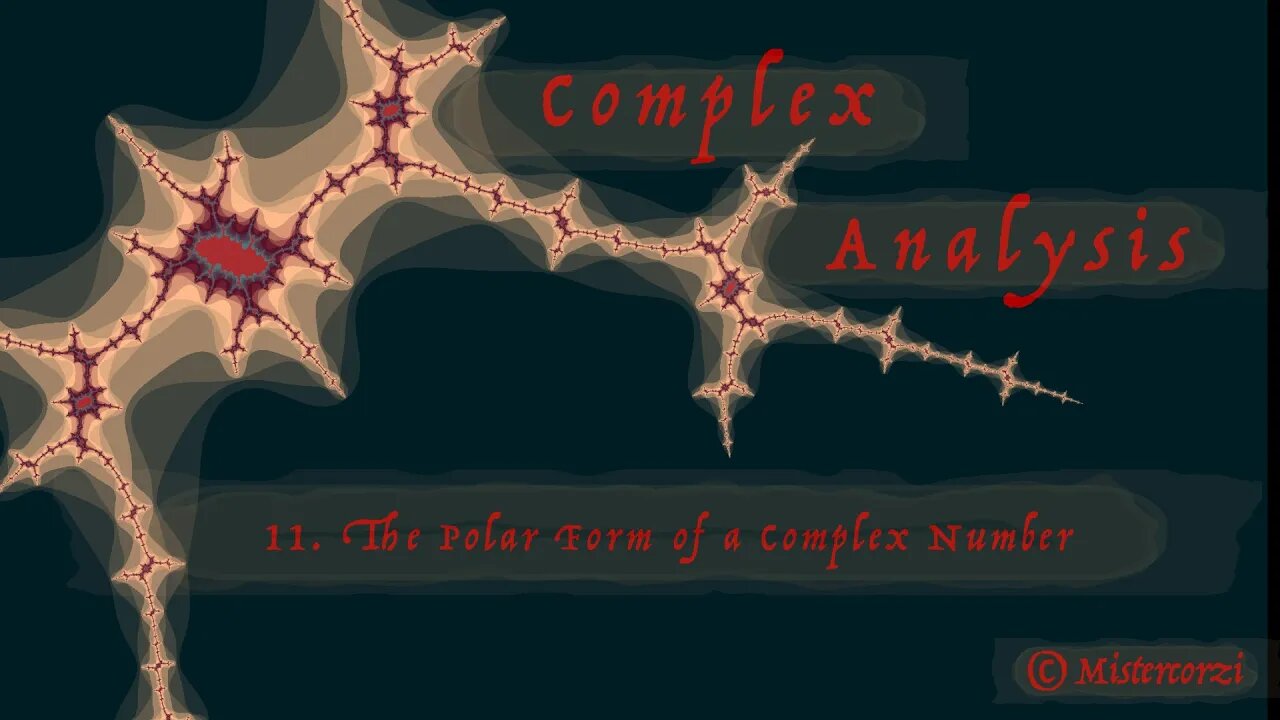Premium Only Content

11 The Polar Form of a Complex Number
This video extends the polar form representation of complex numbers on the unit circle (as covered in Video 10 of this series) to that of any complex number on the Complex Plane.
Illustrations are given of how the geometry of complex number is underpinned by the associated vector geometry. Examples are illustrated using addition and subtraction of complex numbers. Scaling of associated vectors is then used (i.e. multiplication of a vector by a real number scale factor) to generalise the polar form result for complex numbers on the unit circle (i.e. complex numbers with modulus of 1)
The 2nd half of the video involve detailed solutions of the following examples:
1. Represent -2 - i in polar form in two different ways
2.(a) Represent the complex number 3i in polar form
(b) Find a polar representation for -1 + i
(c) Represent the complex number 2√2(cos(-π/4) + i sin(-π/4)) in cartesian form
The viewer is encouraged to attempt these questions before watching the solutions.
Previous videos in this series are:
01 What is a Complex Number?
02 Adding, Subtracting and Multiplying Complex Numbers
03 Dividing Complex Numbers
04 Complex Conjugates
05 The Field of Complex Numbers
06 The Complex Plane
07 The Modulus of a Complex Number
08 Distance on the Complex Plane
09 Properties of the Modulus of a Complex Number
10 Complex Numbers and the Unit Circle
Key words: complex number, polar form, cartesian form, modulus, argument. associated vector, vector addition, negative of a vector, vector subtraction, vector scaling, scale factor, enlargement, reduction, dilatation, complex geometry, real part, imaginary part, Re(z), Im(z), a+ib, π/2, 3π/4
-
 1:40:20
1:40:20
Glenn Greenwald
9 hours agoTulsi's Hearing Exposes Bipartisan Rot of DC Swamp | SYSTEM UPDATE #400
106K200 -
 1:19:48
1:19:48
Simply Bitcoin
14 hours ago $13.78 earnedJerome Powells MASSIVE Bitcoin Backflip! | EP 1172
78.9K5 -
 58:42
58:42
The StoneZONE with Roger Stone
6 hours agoLBJ + CIA + Mob + Texas Oil = JFK Murder | The StoneZONE w/ Roger Stone
59.1K27 -
 58:00
58:00
Donald Trump Jr.
13 hours agoBreaking News on Deadly Plane Crash, Plus Hearing on the Hill, Live with Rep Cory Mills & Sen Marsha Blackburn | TRIGGERED Ep.212
190K151 -
 52:03
52:03
Kimberly Guilfoyle
12 hours agoLatest Updates on Deadly Air Collision, Plus Major Hearings on Capitol Hill,Live with Marc Beckman & Steve Friend | Ep.192
108K37 -
 1:17:16
1:17:16
Josh Pate's College Football Show
10 hours ago $2.41 earnedMichigan vs NCAA | ESPN’s ACC Deal | Season Grades: UGA & Miami | Notre Dame Losses
46.5K2 -
 1:26:50
1:26:50
Redacted News
10 hours agoWhat happened? Trump DESTROYS the Pete Buttigieg run FAA for tragic airline crash | Redacted News
234K192 -
 LIVE
LIVE
VOPUSARADIO
1 day agoPOLITI-SHOCK! Hero Angela Stanton King & Wrongfully Imprisoned J6 Prisoner Josh Pruitt!
51 watching -
 43:37
43:37
Candace Show Podcast
10 hours agoThe Taylor Swift Plot Thickens | Candace Ep 142
151K135 -
 1:37:33
1:37:33
Common Threads
8 hours agoLIVE DEBATE: Trump's Wild Handling of Plane Tragedy
29.8K10